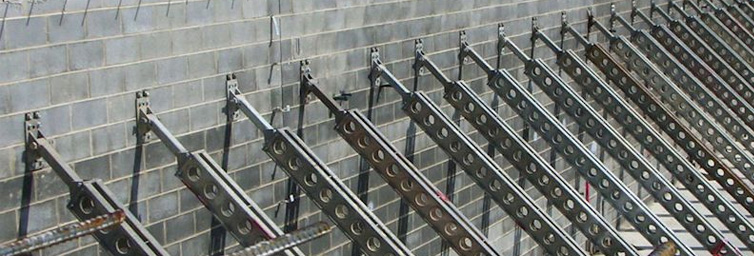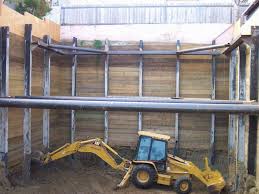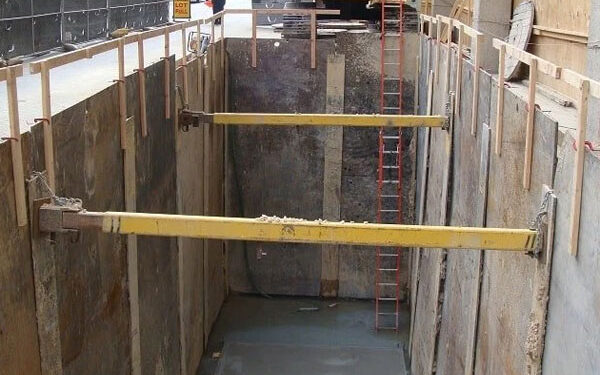Introduction
Discover the importance of shoring in construction projects. Explore different types of shoring systems and their applications for safety and stability. When it comes to construction and excavation projects, ensuring safety and stability is paramount. One crucial aspect of this is shoring, which provides temporary support to walls, trenches, or other structures to prevent collapses and ensure the safety of workers and nearby structures. In this blog post, we’ll delve into the world of shoring, exploring its importance, different types, and their respective applications.
Understanding Shoring
Shoring is a construction technique used to support structures during building, renovation, or repair work. It involves installing temporary structures or props to prevent collapse or movement of soil, walls, or other structures. Shoring systems are typically employed in situations where the existing structures are weak or unstable, or when excavation work is being carried out.

Types of Shoring
Timber Shoring
Timber shoring is one of the oldest and simplest forms of shoring. It involves using wooden planks or logs to support trenches or walls. Timber shoring is often used in smaller-scale projects or where budget constraints limit the use of more advanced shoring systems. While timber shoring is cost-effective and readily available, it may not provide the same level of strength and stability as other types of shoring.
Hydraulic Shoring
Hydraulic shoring utilizes hydraulic pistons or jacks to support trench walls. These systems are quick to install and can provide substantial support to prevent collapses. Hydraulic shoring is often used in situations where space is limited or where rapid installation is required. However, hydraulic shoring systems can be more expensive than other forms of shoring and may require specialized training to operate safely.
Steel Shoring
Steel shoring involves the use of steel beams, plates, or props to support trench walls or other structures. Steel shoring systems are highly durable and can withstand heavy loads, making them suitable for large-scale construction projects. Steel shoring is also versatile and can be adjusted to accommodate different trench sizes and shapes. However, steel shoring systems can be heavy and cumbersome to install, requiring the use of heavy machinery and skilled labor.
Aluminum Shoring
Aluminum shoring is a lightweight alternative to steel shoring. It offers similar strength and durability but is much lighter and easier to handle. Aluminum shoring systems are often used in situations where weight restrictions or limited access make steel shoring impractical. While aluminum shoring systems may not be as strong as their steel counterparts, they are still capable of providing adequate support for most construction projects.

Applications of Shoring
Excavation Work
Shoring is commonly used during excavation work to prevent cave-ins and ensure the safety of workers. Excavation work is one of the primary applications of shoring, where it is essential for maintaining the safety of workers and the integrity of the site. Whether digging trenches for pipelines, foundations, or utility installations, excavation work involves significant risks due to the instability of soil and the potential for cave-ins. Shoring systems provide crucial support to trench walls, preventing collapses and ensuring a secure environment for workers to operate safely. By using shoring during excavation work, construction teams can mitigate the risks associated with trenching and create a stable foundation for further construction activities.
Building Construction
Shoring may be employed during building construction to support walls, floors, or other structures during the construction process. In building construction, shoring serves as a vital component throughout various phases of the project. During the initial stages, shoring supports excavation work by safeguarding the integrity of foundation trenches, preventing collapses, and ensuring the safety of workers below ground level. As construction progresses, shoring systems are utilized to provide temporary support for walls, floors, and other structural elements, particularly in high-rise buildings where the weight loads can be substantial. Whether reinforcing concrete forms or stabilizing structures during alterations or repairs, shoring plays a foundational role in maintaining safety and stability throughout the entirety of the building construction process.
Tunneling
Shoring is essential in tunneling projects to prevent collapses and maintain the integrity of the tunnel walls. Tunneling is a specialized application of shoring that demands meticulous attention to detail and robust support systems. Whether for transportation infrastructure, utilities, or mining operations, tunneling requires the excavation of underground passages while maintaining the integrity of surrounding soil and structures. Shoring in tunneling projects serves to prevent collapses, support the tunnel walls, and ensure the safety of workers navigating the confined spaces below the surface. By employing shoring techniques tailored to the specific geology and engineering challenges of each tunneling endeavor, construction teams can effectively mitigate risks and facilitate the successful completion of these complex underground projects.
Bridge Construction
Shoring may be used during bridge construction to support the bridge deck or other structures during the construction process. Bridge construction is another key application of shoring. During the construction of bridges, shoring is used to support the bridge deck or other structural elements as they are being built. This support helps ensure that the bridge remains stable during construction, preventing collapses or other structural failures. Shoring also allows construction crews to work safely and efficiently, providing the necessary support for heavy equipment and materials. Whether it’s a small Footbridge or a massive highway overpass, shoring plays a crucial role in ensuring the success and safety of bridge construction projects.
Conclusion
Shoring plays a critical role in ensuring the safety and stability of construction and excavation projects. By providing temporary support to walls, trenches, and other structures, shoring helps prevent collapses and protects workers and nearby structures from harm. With various types of shoring available, construction professionals can choose the most suitable option for their specific project requirements, ensuring that safety remains a top priority at all times.







